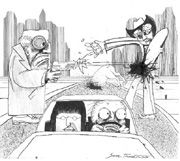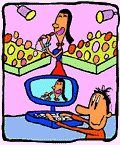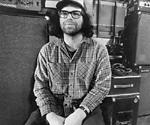IT’S 3,001 MILES to Charleston, South Carolina. At a constant speed of 75 mph (5 mph over the national limit), it should take you 40 hours and 39 seconds to drive there. That’s without stops for the brown peanut water this country calls coffee and your body’s eventual rejection of it.
Assuming you’re not a cunt who bought an SUV, fuel will cost you $165 dollars—half the price of an airplane ticket. You must also fuel yourself, and considering the food-shaped filth that lurks along the highway, you may end up spending more time squatting over an open concrete trench than will ever figure into your calculations.
Why Charleston? Look at a US map. Charleston just sits there, a diagonal line drawn downward by a challenging hand. “Hey Seattle,” it shouts, “you Americano-swilling granola beards can never get me, so have another microbrew and go get a job at Microsoft.” No city can get away with that. Especially Charleston. So, making sure the tape player in your car is sufficiently broken (radio only), take whatever roads get you to I-90 and let the games begin.
As I-90 carves through Washington and onward, you will see much wildlife. Deer, foxes, raccoons, coyotes, jackrabbits. You may, however, want to shield the eyes of your impressionable children, because all these animals will be dead. The corridor between Bozeman, Montana, and Sioux City, Iowa, is a killing zone. Dozens of deer are torn in half by 18-wheelers and dragged, leaving greasy smears that never completely fade on the pavement. The passing meat piles of bone, fur, and intestine are no spectator sport, however. You yourself are a potential contestant on the splatterific game show Hit the Huge Hooved Mammal and Die. After driving 20 hours straight, in pitch black, you will see deer behind every milepost. It is tempting to slow down. Don’t. Instead, wait for a large vehicle to pass you and then ride its ass, forcing it to become “The Deer Shield.”
Armed men in camouflage will be massing at truck stops along the way. Do not attempt to join their populist uprising. They are out to shoot deer, not politicians. “Hey,” you say in a tough new voice, “whatever they kill is one less for me to hit.” Man, this trip has already made you hard.
Drive until you want to die, and then drive some more. Listen to AM country until you hate it beyond words. When you are seven-eighths of the way to Charleston, in Knoxville, Tennessee, detour to New Orleans. On the way, stop by your childhood home in Atlanta to see your once-woodsy neighborhood turned into a maze of strip malls that make Southcenter look like the Cascades. Go to your old downtown pizza hangout only to find that the dive has turned into a citywide chain with fluorescent signs and valet parking. In a teenage knee-jerk response, go to the city’s best vinyl store and buy their entire Oi! section, as well as some Desmond Dekker to let the old hippie at the register know you’re not a Nazi. Get completely confused because the low-income homes downtown have been miraculously transformed into gated Olympic Condominiums. Get back on the freeway with your only consolation being that Atlanta has more hip-hop stations than rock and country stations combined. Get sad when they only play three different songs.
Visit the grave of Hank Williams in Montgomery, Alabama, and follow the instructions of Hank Williams Jr., which ask you not to break off headstone chunks or take dirt from the grave. Montgomery is Greek and majestic, but don’t spend more than a morning there. Take rural US 80 toward Mississippi. You’ll pass through impossible towns where shoeless kids play in burned-out houses, where the signs above stores are spray-painted tags reading “BEER” and “GUN REPAIR.” Shirtless guys will be chugging beer in the backs of smashed pick-ups at 11am. Still, everyone’s polite, if a bit suspicious, and figures that if you’re not playing by the set race and class rules, you must be from someplace foreign like Liverpool or Seattle. They’ll let it slide—this time.
If your traveling companion develops an acute kidney infection in, say, rural Mississippi, don’t panic. Stop in every town and ask where the nearest hospital is. When you walk into that hospital 100 miles later, smile. A nurse spelling Seattle “Ceatle” is just making an honest mistake. Happens all the time. A doctor who speaks no English, assigned here by some government program, might demand to know what drugs you’re on. Beer! Coffee! Cigarettes! Sudafed! No, he’s talking about illegal drugs. This, you tell him, is what people who drive across the country look like. Please, he says, look at you two. It may already be too late.
You can see much of New Orleans while driving around at 1am looking for a 24-hour pharmacy. While infection may kill your companion, gunfire may kill you both. Hearing the local radio tout New Orleans as the murder capital every 15 minutes shouldn’t discourage you as you run red lights looking for a non-hoodlum-occupied corner to stop and check the map. What should discourage (and depress) you is that outside the booze-fueled orgy of the French Quarter, more than half the kids in New Orleans are going hungry while you’re trying to fill an illegible prescription.
Decide you can wait until morning to hit the Walgreens near your hotel. While your companion writhes in pain up in a hot old attic, hit the many 24-hour bars on St. Charles. Think what a pussy city Seattle is for its 2am cop-out. Stare out a stone window of the bar on Euterpe into the nearly deserted streets. You will see a 40-ish man, very drunk, with Mardi Gras beads around his neck (in October). He will be stumbling alone, in khaki shorts and a white polo, red face whooping at every car that drives by. Eyeballs in alleyways chart his progress. You will sip your double Jack and think, “This murder rate makes sense.”
Luckily, your companion’s antibiotics kick in the next day, and after spending a few days and all your money wandering the quieter corners of the French Quarter with a goo-filled plastic cup in each hand (most repeated phrase: “You think we’d be sick of this by now”), load up the car and head across Florida towards Savannah. Savannah is in slow motion and infected with the most boring tuck-your-shirt-in-your-shorts tourists on Earth. Make fun of everyone and go to bed early.
Enjoy a day of leisure. Get some mustardy Low Country BBQ. Hit an elite resort and raise ancient eyebrows by swimming in the Atlantic Ocean instead of lumbering around its edge in white diapers. Onward to Charleston.
WHAT IS CHARLESTON? It’s historic buildings converted to square footage by the same bland retail cartels that rule downtown Seattle. Some antique stores, too. Where’s the hot scene? Ask anyone, and they will send you to a chicken wing restaurant that serves Bud Light in buckets of ice. Still, you can’t judge the place if you’re only there for 12 hours. Twelve hours? That’s right, idiot. You still have to get home. Someone has to go back to work on Monday and pay for all this damage. Repeat trip in reverse, this time skipping all the fun.
At the end of your trip, you can be dramatic and say this: America is nothing more than dead animals, abandoned cars, and casinos strung together by religion, sports, and mediocre food. But this observation is made from a metal bubble with air conditioning and a radio. From a seated position. Like watching television. Stuff on the highway is for you, the traveler; it’s partially true, but it isn’t the whole story.
America is beautiful, mostly empty—but in a good way. The salt marshes of the Georgia coast grow tall with grass and herons. Winding roads in Wyoming offer hours of human-free desolation. The overcast beaches of Hilton Head are where old lonely couples go to get more lonely. There is the spectacular rot and malevolent stench of New Orleans. The suicide-inspiring farms of Iowa. The remaining sadness of the South, invaded and burned 120 years ago. The fiery trees of North Carolina. The ragged teeth of Montana. The sour pumping factories of Biloxi. The sun burning hot over the Gulf of Mexico. This beast has so many heads, I’m not even sure if America exists outside of the third-grade classroom that told me it did.
Coming back, Seattle feels like kindergarten. Lots of rules. Paternal officials who know better than you. Children who put up with it all. Still, rolling in on I-90, those tiny lights burning on its banks of Lake Washington, rocketing through that tunnel and hitting that curve where the city of Seattle unfolds like the tongue of a megalithic beetle, you will feel something you probably weren’t feeling before you left. Home. You are home. And home is good.








